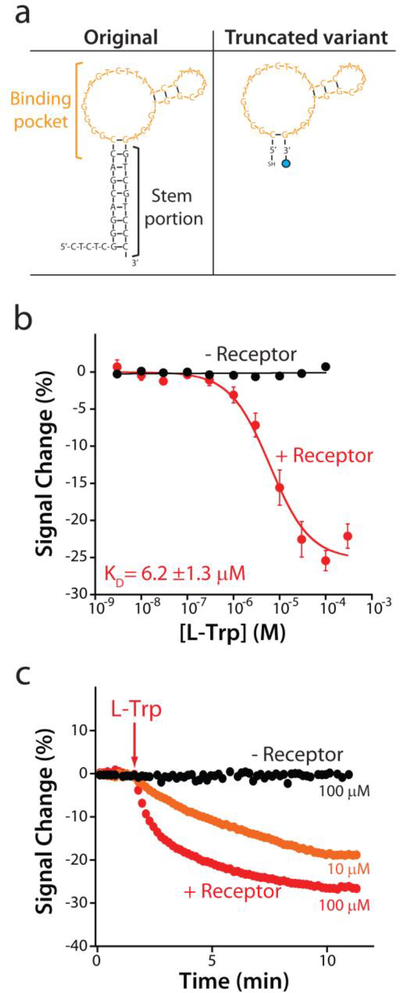Fig. 2.
The re-engineered E-AB sensor responds sensitively and rapidly to its target. (a) To ensure that the aptamer undergoes a large-scale conformational change upon target binding we truncated the parent aptamer sequence to better populate the aptamer’s unfolded state in the absence of target. (b) A sensor fabricated using this truncated aptamer responds to increasing concentrations of tryptophan only in the presence (red curve) of the rhodium-based inorganic receptor, producing a well-defined Langmuir isotherm with a dissociation constant (KD) of 6.2 ± 1.3 μM. (c) The sensor rapidly responds to the addition of 10 or 100 μM tryptophan. The data and the error bars represent the average of three independently fabricated sensors.

